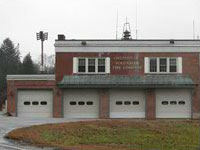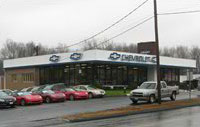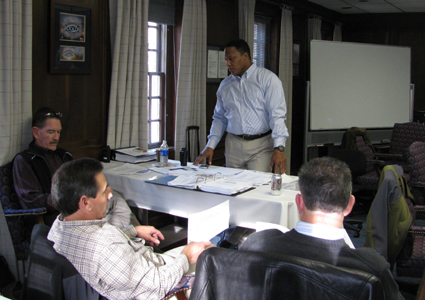
Time: 6:30am |
||

Greenville is a community of 87,000. There is a commercial airport and an Air National Guard Base located approximately 25 miles north of the community. There is an early morning leak in a pipeline that primarily carries petroleum products. The pipeline runs along a railroad right of way which is periodically within a 1,000 feet of a major river. There are two remotely controlled block valves on the line. One is at mile post 16 (16 miles from the terminal) and the other is at mile post 38. The leak is in a 10 inch pipe at approximately mile post 35. The pipeline at the terminal pumps at 1200 psi. |
||

The Greenville Fire Department is a combination fire department with career and volunteer responders. The career department has a full complement of 65 firefighters and officers. There are three volunteer houses. Each has 20-30 members. Each volunteer can bring 3 men to the scene in one vehicle. Seven additional men will arrive in their own vehicles. The career fire department is responding with two engines, a ladder truck, and a chief officer. There are 10 men in total. The third volunteer company is also responding to the initial call with 3 men. There are an additional two volunteer engines and 8 men at the station, ready to respond. The total response for the community can include up to 55 men in an “all call”. Mutual Aid will bring 50 responders in 20-30 minutes and 100 additional responders within 2 hours. |
||

The Greenville Police Department has 12 officers on duty at the time of the event and 5 state or county troopers in the area. The Greenville emergency plan can provide 100 additional law enforcement officers within an hour. A Greenville police officer is first on the scene and three other officers are on the way. There is also a Greenville Police Department Supervisor on scene to determine if more law enforcement personnel are needed. | ||
| Background ^ |
 to see images.
to see images.




























